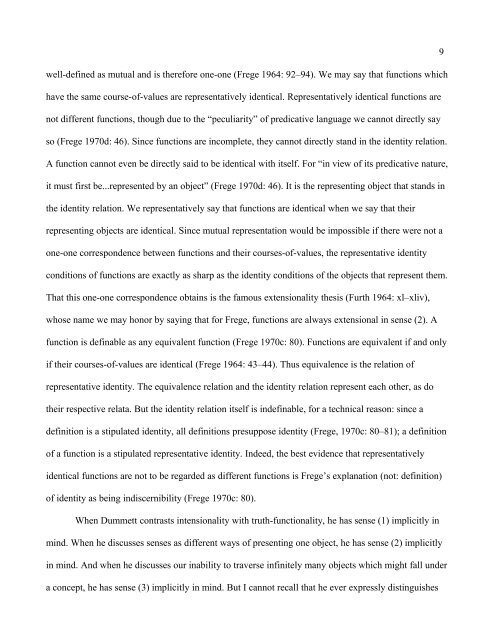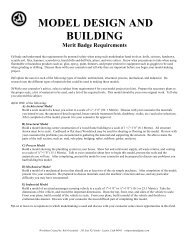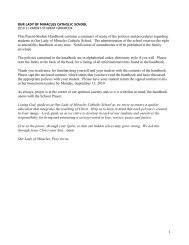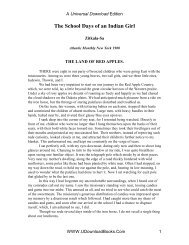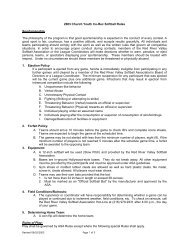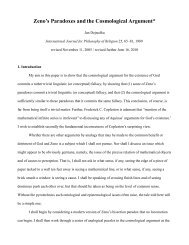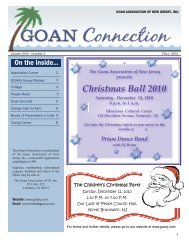Dummett's Backward Road to Frege and to Intuitionism - Tripod
Dummett's Backward Road to Frege and to Intuitionism - Tripod
Dummett's Backward Road to Frege and to Intuitionism - Tripod
You also want an ePaper? Increase the reach of your titles
YUMPU automatically turns print PDFs into web optimized ePapers that Google loves.
well-defined as mutual <strong>and</strong> is therefore one-one (<strong>Frege</strong> 1964: 92–94). We may say that functions which<br />
have the same course-of-values are representatively identical. Representatively identical functions are<br />
not different functions, though due <strong>to</strong> the “peculiarity” of predicative language we cannot directly say<br />
so (<strong>Frege</strong> 1970d: 46). Since functions are incomplete, they cannot directly st<strong>and</strong> in the identity relation.<br />
A function cannot even be directly said <strong>to</strong> be identical with itself. For “in view of its predicative nature,<br />
it must first be...represented by an object” (<strong>Frege</strong> 1970d: 46). It is the representing object that st<strong>and</strong>s in<br />
the identity relation. We representatively say that functions are identical when we say that their<br />
representing objects are identical. Since mutual representation would be impossible if there were not a<br />
one-one correspondence between functions <strong>and</strong> their courses-of-values, the representative identity<br />
conditions of functions are exactly as sharp as the identity conditions of the objects that represent them.<br />
That this one-one correspondence obtains is the famous extensionality thesis (Furth 1964: xl–xliv),<br />
whose name we may honor by saying that for <strong>Frege</strong>, functions are always extensional in sense (2). A<br />
function is definable as any equivalent function (<strong>Frege</strong> 1970c: 80). Functions are equivalent if <strong>and</strong> only<br />
if their courses-of-values are identical (<strong>Frege</strong> 1964: 43–44). Thus equivalence is the relation of<br />
representative identity. The equivalence relation <strong>and</strong> the identity relation represent each other, as do<br />
their respective relata. But the identity relation itself is indefinable, for a technical reason: since a<br />
definition is a stipulated identity, all definitions presuppose identity (<strong>Frege</strong>, 1970c: 80–81); a definition<br />
of a function is a stipulated representative identity. Indeed, the best evidence that representatively<br />
identical functions are not <strong>to</strong> be regarded as different functions is <strong>Frege</strong>’s explanation (not: definition)<br />
of identity as being indiscernibility (<strong>Frege</strong> 1970c: 80).<br />
When Dummett contrasts intensionality with truth-functionality, he has sense (1) implicitly in<br />
mind. When he discusses senses as different ways of presenting one object, he has sense (2) implicitly<br />
in mind. And when he discusses our inability <strong>to</strong> traverse infinitely many objects which might fall under<br />
a concept, he has sense (3) implicitly in mind. But I cannot recall that he ever expressly distinguishes<br />
9


